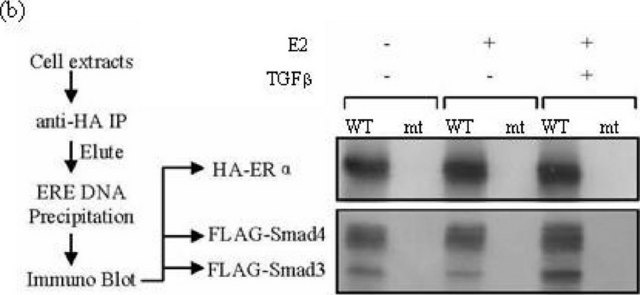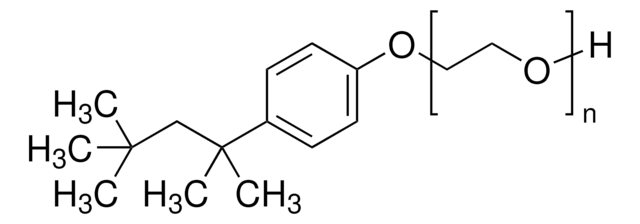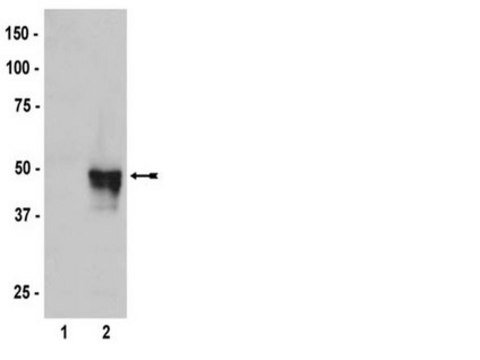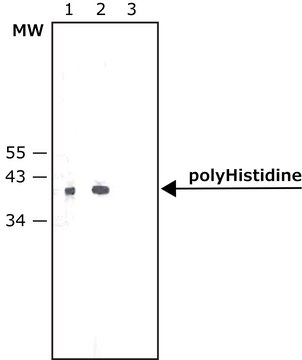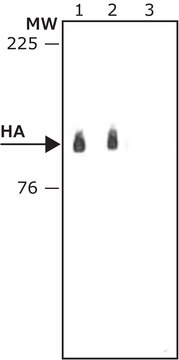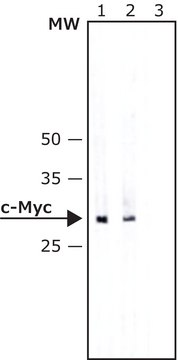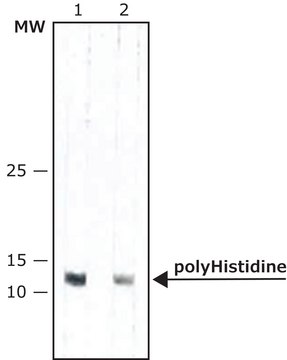A5477
Anti-HA−Alkaline Phosphatase antibody, Mouse monoclonal
clone HA-7, purified from hybridoma cell culture
Synonym(s):
Monoclonal Anti-HA, Monoclonal Anti-HA−Alkaline Phosphatase antibody produced in mouse, Anti-HA, Anti-Influenza Hemagglutinin
About This Item
Recommended Products
biological source
mouse
Quality Level
conjugate
alkaline phosphatase conjugate
antibody form
purified from hybridoma cell culture
antibody product type
primary antibodies
clone
HA-7, monoclonal
form
buffered aqueous glycerol solution
technique(s)
western blot: 1:4,000 using extracts of mammalian cells expressing HA tagged fusion proteins
shipped in
wet ice
storage temp.
2-8°C
Looking for similar products? Visit Product Comparison Guide
General description
Specificity
Immunogen
Application
Biochem/physiol Actions
Physical form
Storage and Stability
Disclaimer
Not finding the right product?
Try our Product Selector Tool.
Storage Class Code
10 - Combustible liquids
Regulatory Information
Choose from one of the most recent versions:
Certificates of Analysis (COA)
Don't see the Right Version?
If you require a particular version, you can look up a specific certificate by the Lot or Batch number.
Already Own This Product?
Find documentation for the products that you have recently purchased in the Document Library.
Which document(s) contains shelf-life or expiration date information for a given product?
If available for a given product, the recommended re-test date or the expiration date can be found on the Certificate of Analysis.
How do I get lot-specific information or a Certificate of Analysis?
The lot specific COA document can be found by entering the lot number above under the "Documents" section.
How do I find price and availability?
There are several ways to find pricing and availability for our products. Once you log onto our website, you will find the price and availability displayed on the product detail page. You can contact any of our Customer Sales and Service offices to receive a quote. USA customers: 1-800-325-3010 or view local office numbers.
What is the Department of Transportation shipping information for this product?
Transportation information can be found in Section 14 of the product's (M)SDS.To access the shipping information for this material, use the link on the product detail page for the product.
What is the isotype and light chain for Monoclonal Anti-HA antibody clone HA-7 produced in mouse?
Monoclonal Anti-HA antibody clone HA-7 is mouse IgG1, kappa light chain.
My question is not addressed here, how can I contact Technical Service for assistance?
Ask a Scientist here.
Our team of scientists has experience in all areas of research including Life Science, Material Science, Chemical Synthesis, Chromatography, Analytical and many others.
Contact Technical Service